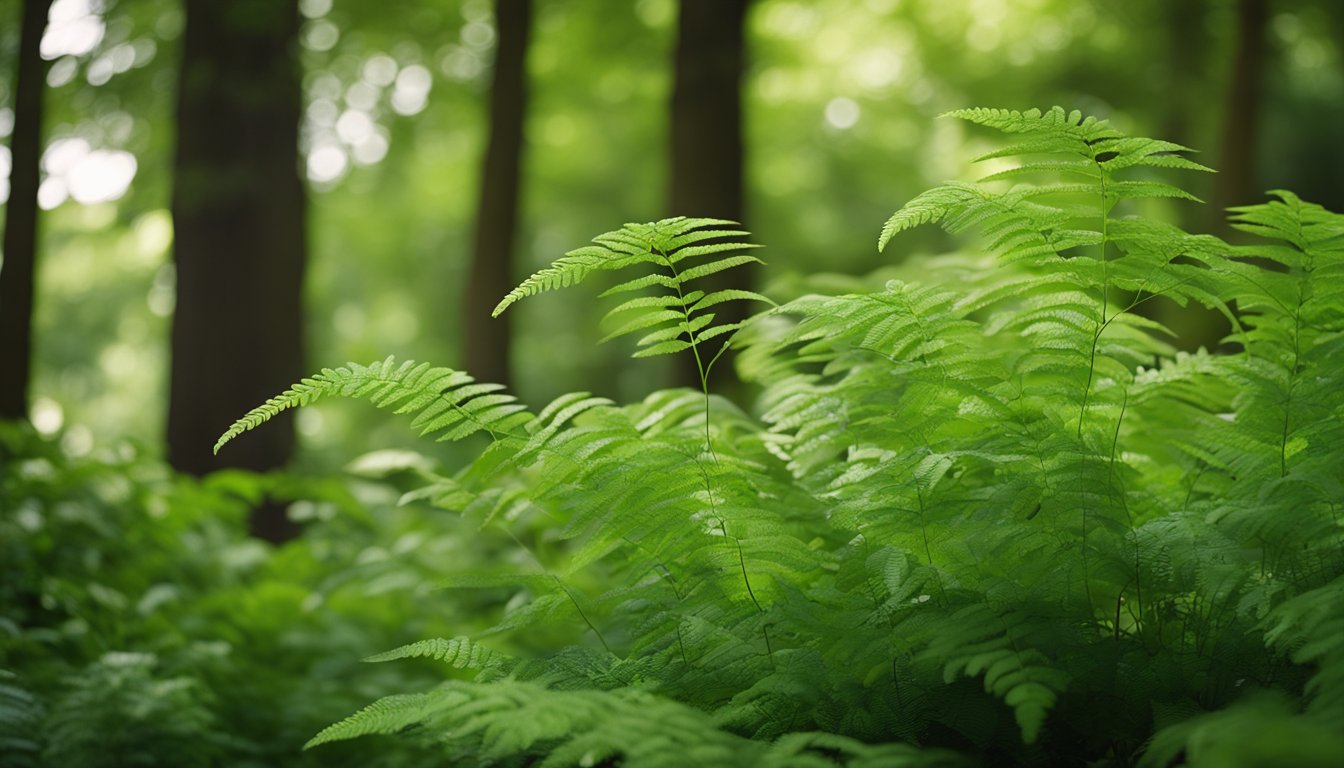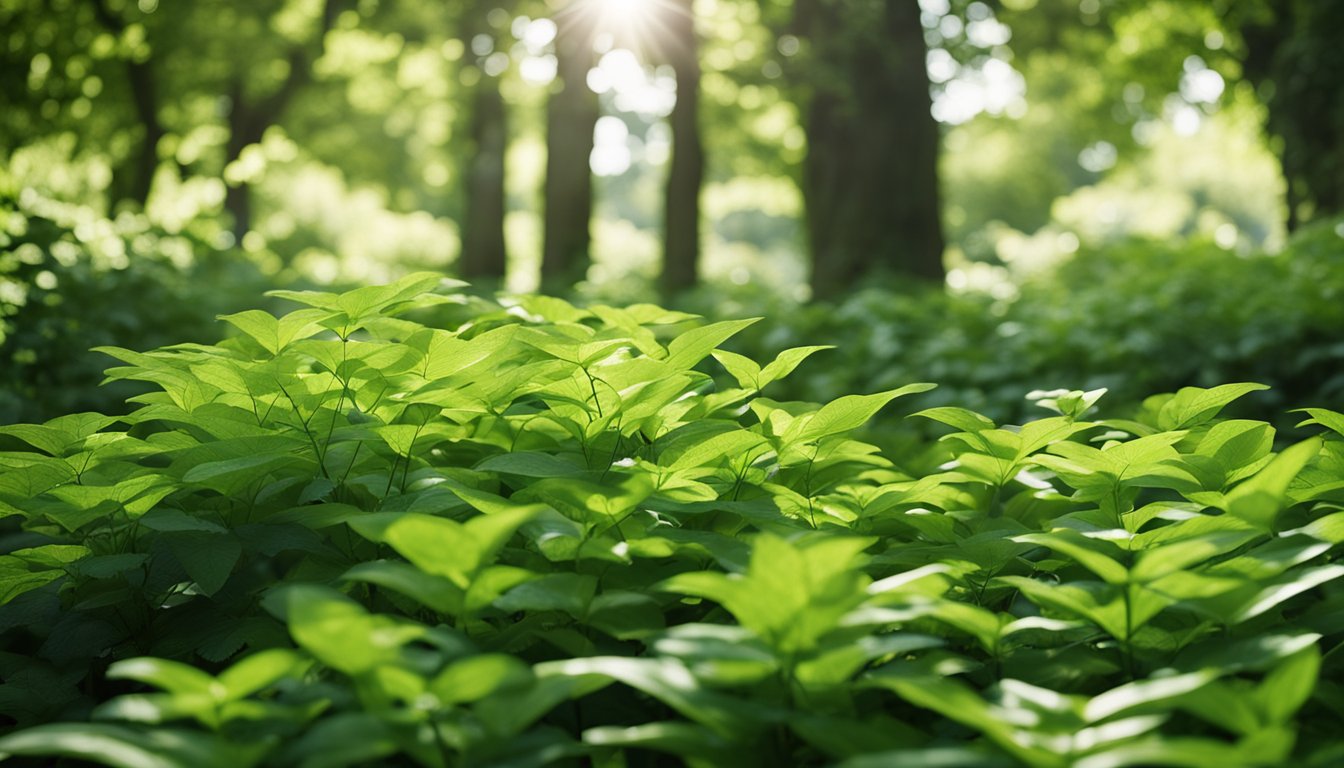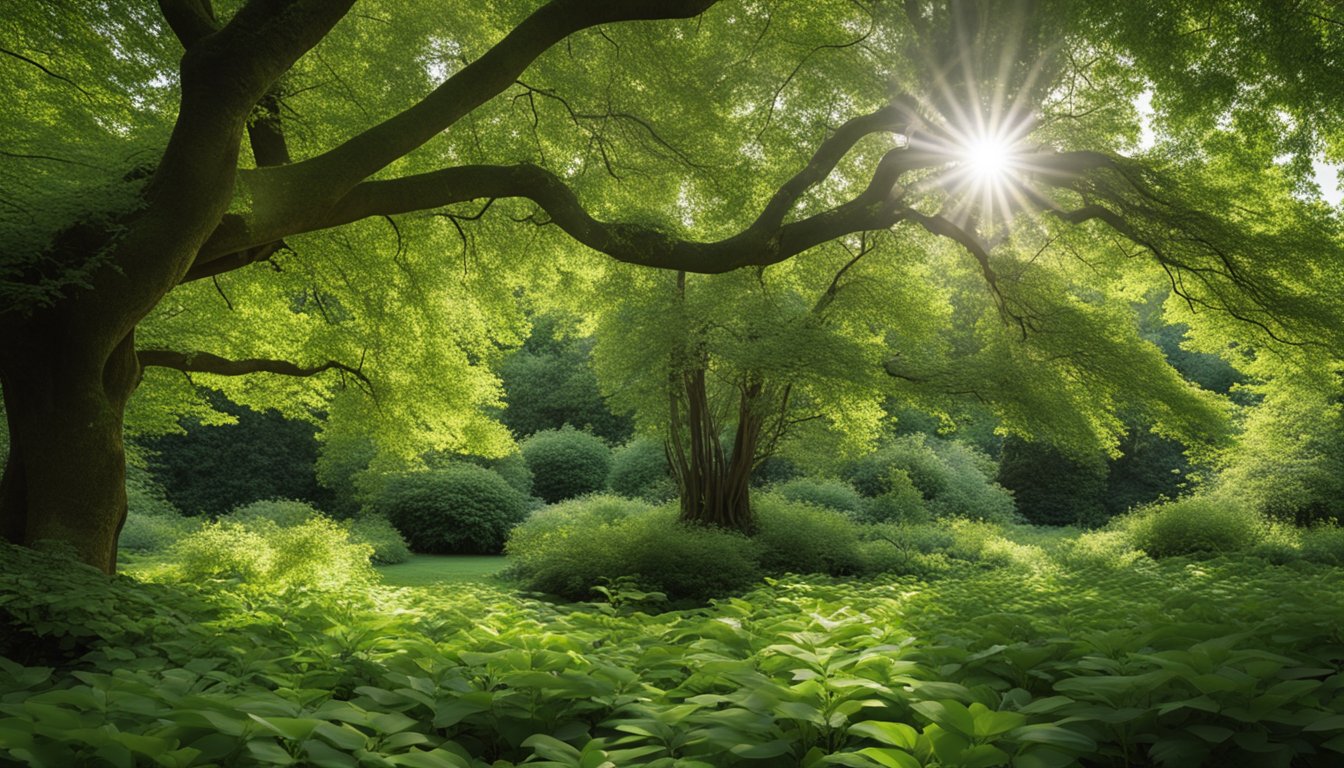Late updated: 18 Jul 2024 09:07
Written by: Emily Thornton
Enhancing UK Gardens With Native Shade Tolerant Plants: Top Picks for Year-Round Appeal
Enhancing UK gardens with native shade-tolerant plants can transform shadowy corners into vibrant spaces. Many British gardens face shading challenges, whether from ancient trees, neighbouring structures, or northern exposures. By choosing the right native plants, we can create lush, colourful havens that thrive even with limited sunlight. Selecting the appropriate shade-tolerant species ensures that our gardens remain lively and biodiverse all year round.

Native plants such as Coleus, with their beautifully coloured leaves, or the fragrant Rosa gymnocarpa, offer both aesthetic beauty and ecological benefits. These plants not only brighten up shady spots but also provide essential habitats for local wildlife. Their adaptability to the UK’s variable soil types makes them a practical choice for enhancing garden biodiversity and resilience.
Our mission is to guide you through the selection and care of these plants, ensuring that your garden flourishes regardless of the light levels. From ground-cover options to spectacular flowering shrubs, we'll explore the best native choices that bring life and vibrancy to shaded areas.
Key Takeaways
- Native shade-tolerant plants can transform dark areas into vibrant spaces.
- These plants support local wildlife and adapt well to UK soil types.
- Proper selection and care ensure year-round garden resilience.
Understanding Shade in UK Gardens

In the UK, the variety and intensity of shade in gardens can significantly impact plant growth and biodiversity. Recognising and categorising different types of shade is critical for selecting plants that will thrive in those conditions.
Categorising Types of Shade
We can identify several types of shade in UK gardens. Dappled shade occurs under deciduous trees, where sunlight filters through leaves, creating a pattern of light and shadow. Partial shade refers to areas that receive indirect sunlight for 3-6 hours a day, such as north-facing sides of walls or fences. Full shade describes spots with less than 3 hours of direct sunlight per day, typically under dense tree canopies or in the shadow of buildings.
Knowing the type of shade helps us choose plants that will flourish. For instance, dappled shade suits plants like Brunnera macrophylla, which feature heart-shaped foliage and delicate blooms. Partial shade areas are ideal for hardy geraniums that brighten spaces with vibrant flowers. Meanwhile, deep shade is perfect for plants like Coleus, which thrive with minimal light exposure.
The Ecological Impact of Shade on Plant Growth
Shade dramatically influences our gardens' ecological balance. In shaded environments, photosynthesis rates drop, slowing down plant growth. This slower pace often results in more robust root systems and intricate leaf structures. Plants adapted to shade, like Campanula trachelium, are not just survivors; they're vital contributors to local biodiversity.
Shaded areas are also cooler and moister, providing a habitat for various wildlife species. Ground cover plants in these regions, such as mosses and ferns, help prevent soil erosion and maintain humidity. By carefully selecting shade-tolerant plants, we support a diverse ecosystem, enhancing our gardens' resilience and ecological value.
Understanding these aspects of shade enables us to design gardens that are not only beautiful but also support a vibrant and thriving ecosystem.
Selecting and Caring for Shade-Tolerant Plants
Creating a lush, thriving shade garden requires selecting suitable plants and providing the proper care. Key considerations include choosing perennials for year-round interest, native shrubs and climbers for structure, and seasonal highlights. Understanding soil and water requirements, as well as best practices for pruning and maintenance, is crucial.
Shade-Loving Perennials for Year-Round Interest
Perennials ensure consistent beauty throughout the seasons. Hellebores, known for their hardy nature, bloom in late winter to early spring, offering colour when little else is visible. Foxgloves (Digitalis purpurea) add vertical interest with their tall, bell-shaped flowers in spring. For extended summer blooms, hardy geraniums thrive in shade, producing saucer-shaped flowers in various hues. Hostas provide attractive foliage throughout the growing season, and ferns contribute their unique, lush fronds year-round.
Native Shrubs and Climbers for Structure
Adding structural elements with shrubs and climbers enhances the garden's design. Honeysuckle (Lonicera) offers sweetly scented flowers, attracting pollinators. Euonymus varieties, especially evergreen types, provide consistent green foliage. Clematis thrives in the shade, with striking flowers from spring into autumn. Dogwood (Cornus) can add interest with its vivid stems and autumnal foliage. For climbers, ivy (Hedera) is an excellent choice, offering ever-present greenery and habitat for wildlife.
Cultivating Seasonal Highlights
Seasonal highlights bring dynamic interest as the year progresses. Snowdrops bloom in late winter, signalling the garden's awakening. Primroses and wood anemones add a splash of spring colour. Cyclamen offer vibrant shades in autumn, while winter aconite gives a golden glow as winter approaches. Incorporating bulbs like snowdrops and foliage plants like japanese forest grass ensures continuous visual appeal.
Soil and Water Requirements for Healthy Growth
Proper soil conditions and watering practices are paramount. Most shade-loving plants prefer moist, well-drained soil rich in organic matter. Adding compost improves soil structure. For plants in dry shade, such as ferns and wood spurge (Euphorbia), maintaining consistent moisture is key. Damp shade plants like impatients thrive in moisture-retentive soils. Regular mulch application helps conserve soil moisture and regulate temperature.
Pruning and Maintenance Tips for Shade-Loving Flora
Effective pruning and maintenance sustain plant health and garden aesthetics. Hydrangeas and clematis benefit from annual pruning to encourage vigorous growth and flowering. For evergreen shrubs, light trimming maintains shape and promotes dense foliage. Remove dead or diseased wood promptly to prevent the spread of disease. Regularly clear fallen leaves to manage moisture levels and prevent fungal issues. Pruning at the right time, such as after flowering for many shrubs, ensures a healthier garden.
Frequently Asked Questions

In this section, we address some common questions about enhancing UK gardens with native, shade-tolerant plants. We aim to provide specific, expert recommendations that will help create sustainable and thriving garden spaces.
What are some low-maintenance perennials that thrive in shaded areas of UK gardens?
For shaded areas, low-maintenance perennials like red campion (Silene dioica) are ideal. This wildflower features delicate pink flowers and rich green stems, forming bold clumps that flourish in shady spots.
Can you recommend any shade-loving flowering plants suitable for the UK climate?
Coleus plants, known for their beautiful coloured leaves, are excellent for shaded UK gardens. They bring vibrant hues and are hearty enough to thrive in partial to deep shade.
Which vegetables can be successfully grown in shaded parts of a UK garden?
Leafy greens such as spinach and Swiss chard are well-suited to shaded areas. These vegetables do not require full sunlight, making them perfect for gardens with limited daylight.
Are there any tall plants that prefer shaded conditions and are native to the UK?
Nettle-leaved bellflower (Campanula trachelium) is a large perennial that enjoys shaded conditions. This native plant not only adds height but also provides attractive blooms.
What types of trees are indigenous to the UK and well-adapted to grow in shade?
The rowan tree (Sorbus aucuparia) is indigenous to the UK and grows well in shaded environments. It offers beautiful berries that attract wildlife and enhance garden biodiversity.
Could you suggest any outdoor plants for shaded areas that are particularly fast-growing?
For fast-growing options, consider ferns like the lady fern (Athyrium filix-femina). These plants grow quickly and thrive in shaded, moist conditions, making them perfect for filling garden spaces rapidly.
